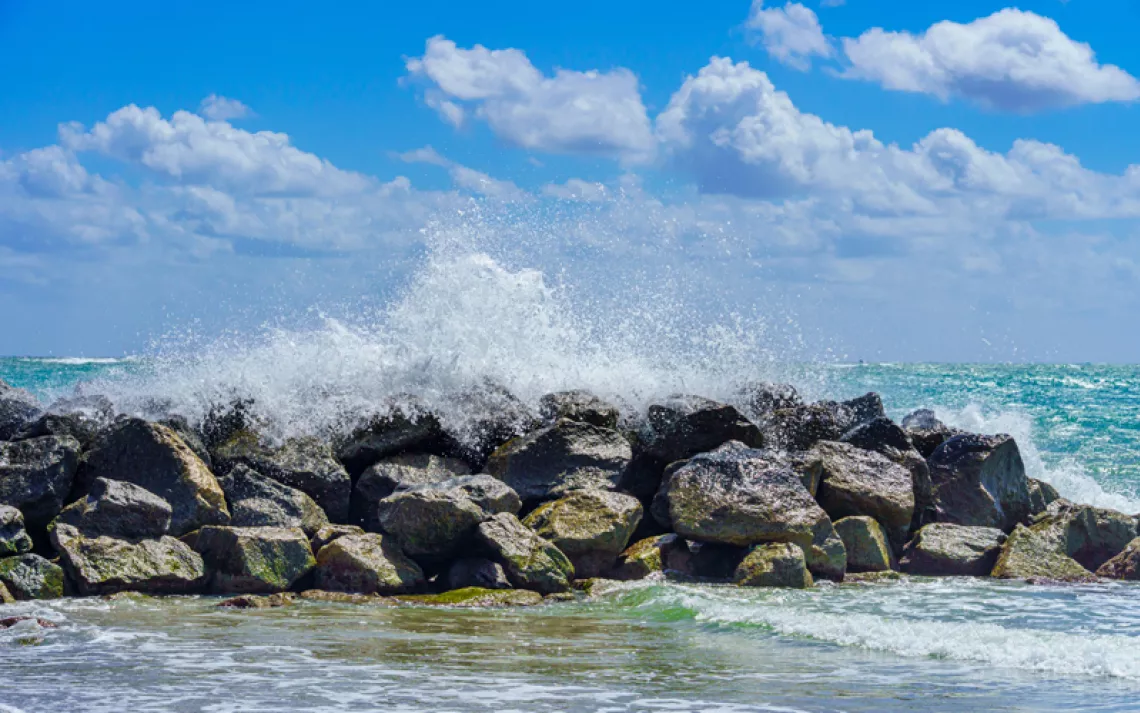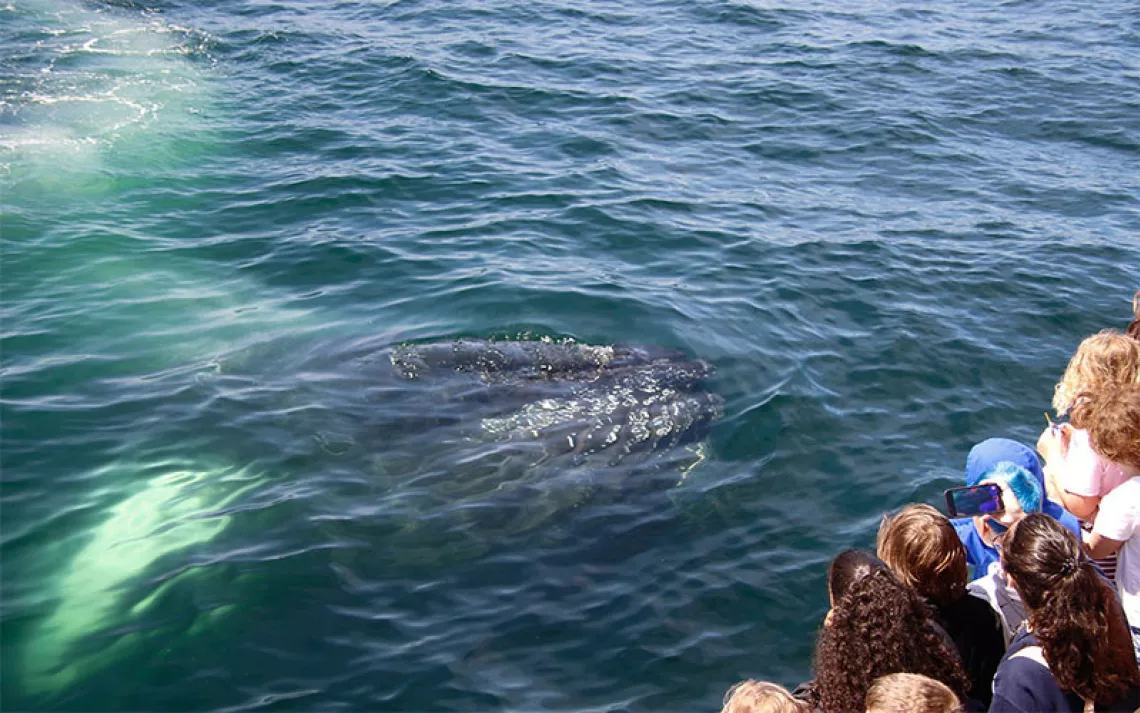In the Heart of the Sea, the Great White Whale Strikes Again

Photo courtesy of Imagine Entertainment
In 2014, writer/director Darren Aronofsky’s 2014 epic Noah turned the Old Testament flood into an environmental parable for modern times. Now, the real life prototype for Herman Melville’s literary masterpiece Moby Dick has become an ecological allegory in director Ron Howard’s In the Heart of the Sea. This exciting seafaring drama is based on the 1820s destruction of the whaling ship the Essex, which inspired whaler-turned-novelist Melville to write his 1851 classic about the great white whale.
In the Heart of the Sea unspools as a narrative that flashes back and forth between an Essex survivor, Tom Nickerson (Irish actor Brendan Gleeson as the older Nickerson) telling the terrible tale of what happened years earlier aboard the ship, and the depiction of his nautical yarn in the onscreen action. Nickerson is talking to none other than Melville (played by Ben Whishaw). Again and again throughout the film, the action breaks and returns to Nickerson and Melville, an unorthodox storytelling device that, in its way, echoes the then-radical storytelling Melville used in Moby Dick.
The tale opens with first mate Owen Chase (Australian actor Chris Hemsworth, best known for playing the mighty Thor) as he ships out aboard the Essex. Chase, a veteran whaler, has been passed over for command by the ship's greedy owners, who have made George Pollard (Benjamin Walker) captain solely because of his Nantucket pedigree. This plot point cleverly injects a note of class struggle into the narrative.
But things quickly go wrong: Pollard may be a scion of a prominent whaling family, but the inexperienced captain proceeds to make a series of colossal mistakes, among them searching for the behemoths of the deep in a remote part of the Pacific Ocean far west of South America’s coast.
In the middle of nowhere, the Essex finally encounters a pod of whales, basically minding their own business. Upon being provoked, a bull whale turns on the whalers, attacking not only the whaleboats bearing Case and other harpooners, but — rather breathtakingly and rendered with impressive special effects—the Essex itself. The vengeful whale—the proto Moby Dick—pursues the survivors as the sailors float adrift, becoming a sea stalker on a monstrous mission of divine retribution.
In the Heart of the Sea is much more than a thrilling seafaring adventure in the tradition of Charles Nordoff and James Norman Hall’s oft-filmed Mutiny on the Bounty. The script, co-written by Charles Leavitt (who was behind 2006’s socially conscious Blood Diamond), dwells on the fact that in the first half of the 19th century, whaling was the backbone of U.S. industry. To light America’s lamps, whaling ships were dispatched from ports such as Nantucket and New Bedford to far-flung waters around the world. In the Heart of the Sea implicitly criticizes the notion that humans have the right to hop across the globe, willy-nilly murdering other creatures and boiling their blubber to profiteer from their carcasses.
With its unblinking depiction of whaling, In the Heart of the Sea invites comparisons to today’s energy industry. Almost 200 years after the sinking of the Essex, our current means of keeping the lights on is similarly destructive, only on a global scale.The advent of the fossil fuel industry is specifically mentioned at the end of the movie when characters discuss the early extraction of oil from the ground in Pennsylvania: a premonition of things to come. The film’s depiction of the whaling ship’s owners as money-grubbing, mendacious capitalists is an apt metaphor for contemporary captains of the energy industry, such as Exxon’s executives who concealed their own research on how fossil fuel combustion drives global warming.
In addition to its subtle critique of industrial capitalism, Howard’s deft direction and his tenderness toward the CGI whales also arguably makes In the Heart of the Sea an animal rights film. Some audience members are likely to empathize with the sea creature, not man. (And I do mean “man”—there are no women out at sea.) Unlike the great white shark in Steven Spielberg’s iconic Jaws, Howard’s whale is an avenging angel, wreaking havoc on the hubristic humans who, in their insatiable pursuit of profit, sail to the ends of Earth to hunt down animals for their oil.
In turnabout of fair play, the whale becomes the pursuer, teaching the hunters a lesson they’ll never forget. The cetacean is also depicted as being quite intelligent: Hemsworth’s character may hurl harpoons like Thor throwing his hammer Mjölnir, but the clever whale turns the lances to his revenge-driven advantage, irreparably damaging the Essex (which the owners greedily try to cover up).
While Melville’s magnum opus continues to enthrall readers, success eluded Moby Dick when it was published. Melville’s 1851 metaphorical fable was, alas, way ahead of its time. Nineteenth century readers couldn’t understand Moby Dick; its psychological themes and radical style were too much for most people. Hopefully, today's more ecologically aware audiences will better comprehend In the Heart of the Sea's pro-animal, environmental messages about the destruction wrought by the oil industry—then and now.
In the Heart of the Sea opens December 11. Watch the trailer here.
 The Magazine of The Sierra Club
The Magazine of The Sierra Club



